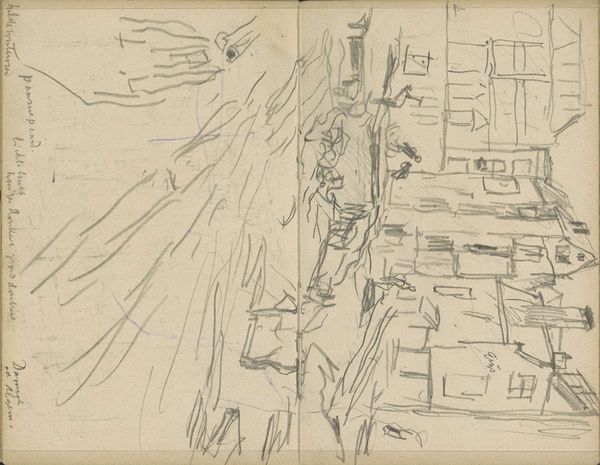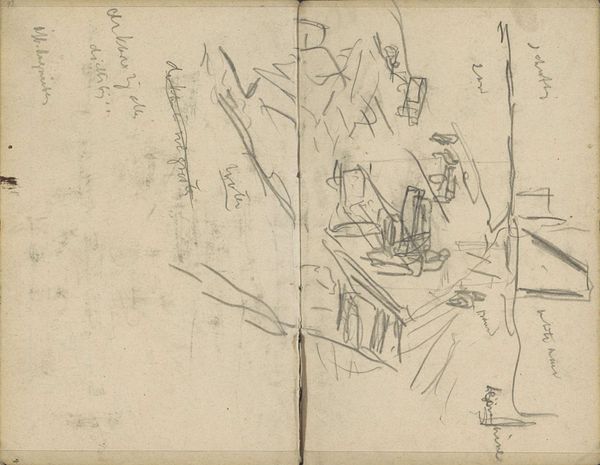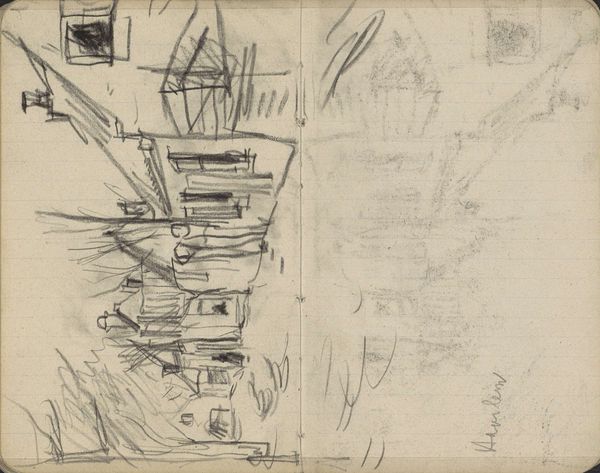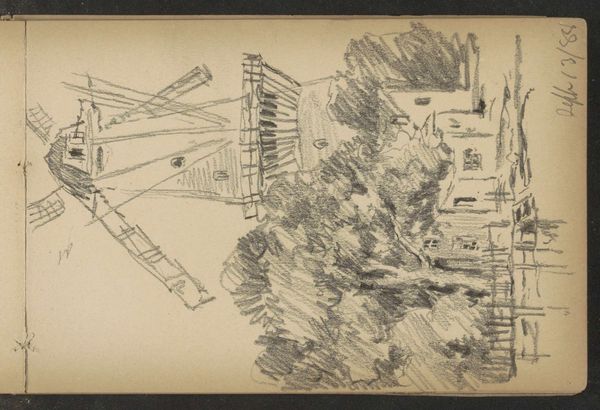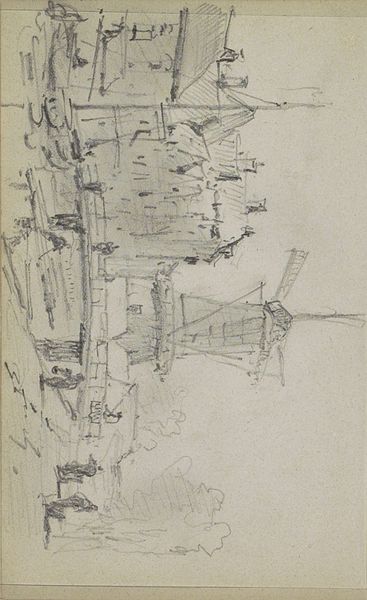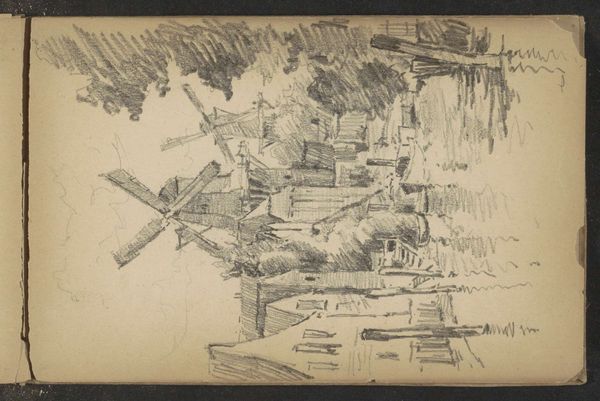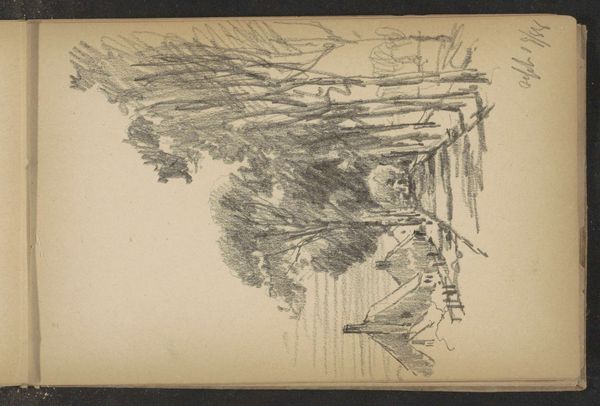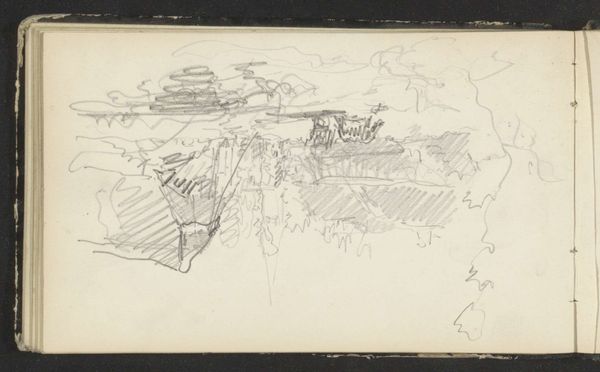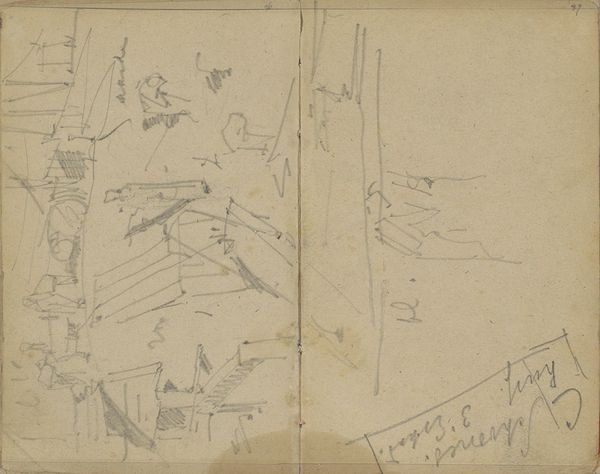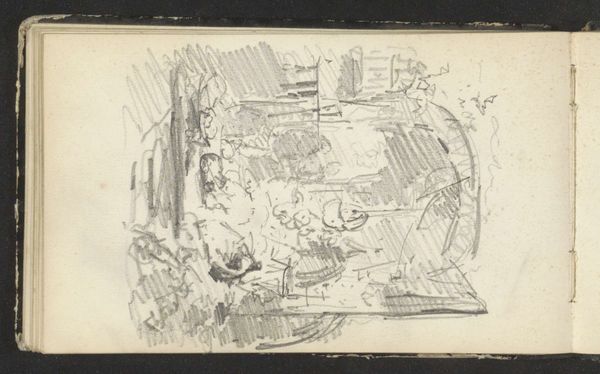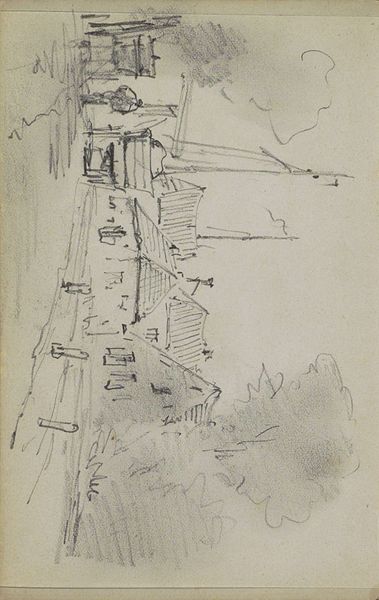
drawing, pencil
#
drawing
#
landscape
#
pencil
#
realism
Copyright: Rijks Museum: Open Domain
Editor: This is "Aanlegplaats en molen te Rotterdam," a pencil drawing by Alexander Shilling, dating from around 1888. The sketchiness creates a real sense of immediacy; you can almost feel the artist capturing a fleeting moment. What's your interpretation of this work? Curator: What strikes me is how Shilling captures a moment of transition in Rotterdam's history. Notice the contrast between the traditional windmill, a symbol of Dutch heritage, and the more industrial elements along the waterway, like ships and buildings. How does this tension speak to the rapidly changing urban landscape of the late 19th century, and the anxieties of industrial progress threatening traditional ways of life? Editor: So you’re seeing it as a commentary on the changing face of Rotterdam at that time? The traditional versus the modern… Curator: Exactly. Consider, too, how access to these resources—the waterways, the industry, even the land itself—often shifts dramatically during such periods of change, and what that meant for various classes. The modernization of a port city is never neutral. The pencil medium itself also adds another layer to it. Was this accessible to the working class or only privileged social strata at the time? Editor: That's something I hadn’t considered, the socio-economic aspect and who had access to artmaking in the first place. Curator: Art is rarely made in a vacuum. Considering its context can drastically alter how we understand its message. Now what do you make of the artist's choice of viewpoint and angle of the scene in this setting? Editor: Thinking about it, that viewpoint elevates the viewer to observe changes from a certain distance... like an outside observer Curator: Indeed! So much to think about when approaching a simple sketch! Editor: I’ll definitely look at these older works with a different lens now, thank you.
Comments
No comments
Be the first to comment and join the conversation on the ultimate creative platform.

